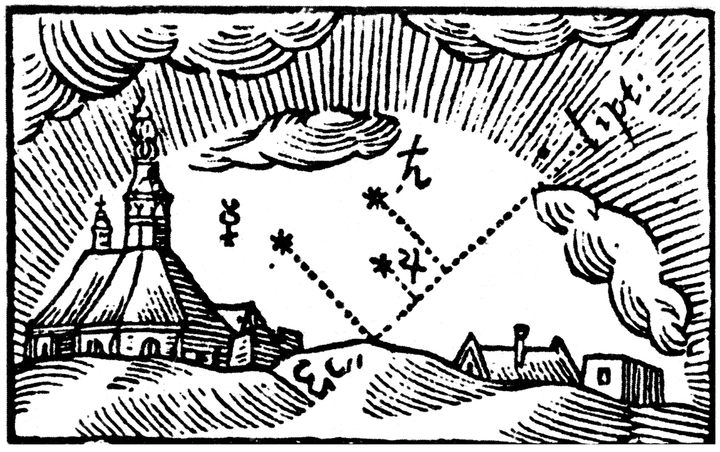
Astrologers Were the Quants of the Ancient World
Coincidence and correlation in the stars, from the founding of Baghdad to the New York Yankees to COVID-19.
This story was excerpted and adapted from the author’s recent book, A Scheme of Heaven: The History of Astrology and the Search for our Destiny in Data. Copyright (c) 2020 by Alexander Boxer. Used with permission of the publisher, W. W. Norton & Company, Inc. All rights reserved.
The location was perfect for a new capital city. There were, of course, the standard prophecies that a great metropolis was destined to arise there. Even more persuasive, perhaps, were the reports that of all the districts along the Tigris River, the site was said to be the least infested with mosquitoes. But the main reason the caliph Abu Jafar al-Mansur chose to build his capital at Baghdad was that, with the absorption of Persia into Dar al-Islam, the “abode of Islam” had spread far to the east, and the place that would be Baghdad lay right at its heart.
But what good is the right place if it’s not also the right time? Accordingly, al-Mansur summoned his top astrologers—Nawbakht, a Persian, and Masha’allah, a Jew—to determine the optimal moment to inaugurate construction. Remarkably, the horoscope of Baghdad’s foundation has been preserved in the writings of al-Biruni, one of the foremost astronomers of a few centuries later. Baghdad’s founding can therefore be dated with especially high confidence to the afternoon of July 30 in the year 762. At that precise instant, Jupiter, the planet of kingdoms and dynasties, was rising in the east, while Mars, the planet of war, was setting in the west. Indeed, no horoscope could have been more appropriate for a city that al-Mansur insisted be called Madinat as-Salam, the “City of Peace.”
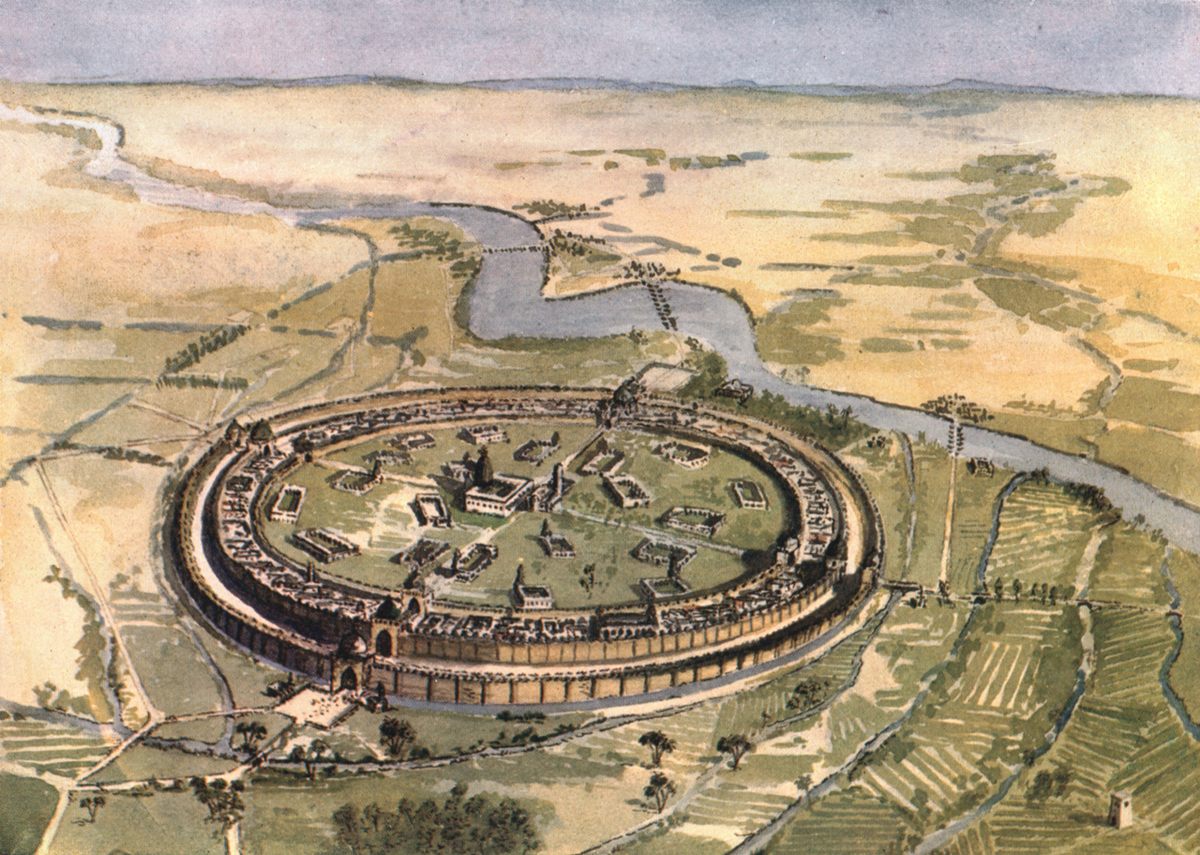
Looking back at Baghdad’s founding, there is a strong case to be made that al-Mansur’s personal obsession with astrology was the not-so-secret impetus for his city’s scientific pursuits. Certainly, the almost manic translation of Greek texts into Arabic that took place in the city appears a lot less eccentric if it’s understood as part of a government initiative to harness the power of the stars. Prior to seizing the caliphate, al-Mansur had cultivated his power base among the conquered provinces of Persia. There, in return, he was influenced by a Persian tradition that saw the fall of Persia and the rise of the Arabs in explicitly astrological terms. One of the earliest expositors of this idea was none other than Masha’allah, the Jewish astrologer hand-picked by the caliph to cast the horoscope for his new capital city. Just as the planets rose and set in their allotted times, so, too, it was said, did kingdoms, dynasties, and even religions. The most importance of these cycles, insofar as they were supposed to herald events of global significance, were the successive conjunctions of Jupiter and Saturn.
Astrology’s insistence on linking earthly events with celestial causes in this way may seem, today, like an easily dismissed irrationality. Yet the astrologers of antiquity were no mushy-headed mystics. On the contrary, astrology was the ancient world’s most ambitious applied mathematics problem, a grand data-analysis enterprise sustained for centuries by some of history’s most brilliant minds, from Ptolemy to al-Kindi to Kepler. Astrology’s demand for high-precision planetary data led directly to Copernicus’s revolution and, from there, to modern science. Astrology’s challenge—teasing out inferences from numerical data, determining which patterns are real and which aren’t—remains fundamental in science today, too, especially as society relies increasingly on complex, data-driven algorithms. Astrologers were the quants and data scientists of their day; those who are enthusiastic about the promise of data for unlocking the secrets of our world should note that others have come this way before. Our irrepressibly human penchant for pattern-matching makes the history of astrology—a history that can bring together astronomy, statistics, cryptology, Shakespeare, COVID-19, presidential assassinations, and even the New York Yankees in a dance of coincidence and correlation—surprisingly timely and always fascinating.
Saturn, the outermost planet visible to the naked eye, takes about 30 years to complete an orbit through the zodiac constellations of the night sky. Jupiter, the largest and the next-most-distant planet, takes about 12 years. As these two astral giants chase each other around, Jupiter catches up to and passes Saturn roughly once every 20 years. The moment when these planets, or any two heavenly bodies, line up in ecliptic longitude is called a conjunction. As a curious consequence of orbital mechanics, every conjunction of Jupiter and Saturn occurs almost exactly one third of the way around the zodiac from the spot of the previous conjunction. Thus, three successive Jupiter-Saturn conjunctions will trace an almost-perfect equilateral triangle in the sky.
To give an example: If Jupiter and Saturn come into conjunction in the zodiac sign of Aries, then approximately 20 years later, their next conjunction can be expected to occur in Sagittarius. The following conjunction, 20 years after that, will be in Leo, before it cycles back to Aries. Aries, Sagittarius, and Leo are the three zodiac signs associated with the element of fire. Thus, in this example, the sequence of Jupiter-Saturn conjunctions occurred entirely within the triangle of fire signs, a pattern also known as the fiery trigon or triplicity.
Of course, the astral triangles traced out this way don’t exactly overlap, and so after about 10 conjunctions, or roughly 200 years, the entire pattern migrates to the next triplicity of signs. Over about 800 years, the sequence of Jupiter-Saturn conjunctions will slowly cycle through all four triplicities: fiery, earthy (Taurus, Capricorn, Virgo), airy (Gemini, Aquarius, Libra), and watery (Cancer, Pisces, Scorpio).
Masha’allah and his successors saw in this sequence an organizing principle for the entire history of the world. Local political changes, they suggested, were augured by the regular or “little conjunctions” that occur roughly once every 20 years. Larger shifts of kingdoms and dynasties, about every 200 years, were heralded by “middle conjunctions,” when the sequence migrates from one triplicity to another. Finally, the most momentous historical upheavals, such as the fall of empires or the rise of new religions, were portended by “great conjunctions,” once in a millennium, when the sequence of conjunctions has completed a full cycle through all four zodiac triplicities: fire, earth, air, and water.
The chronology Masha’allah developed with this theory placed the creation of the universe in the year 8292 B.C., with the first conjunction of Jupiter and Saturn assigned to the year 5783 B.C., in the sign of Taurus. Masha’allah then hopped through the history of the world, conjunction by conjunction, pausing only to comment on a select few that he deemed to be especially history-altering.
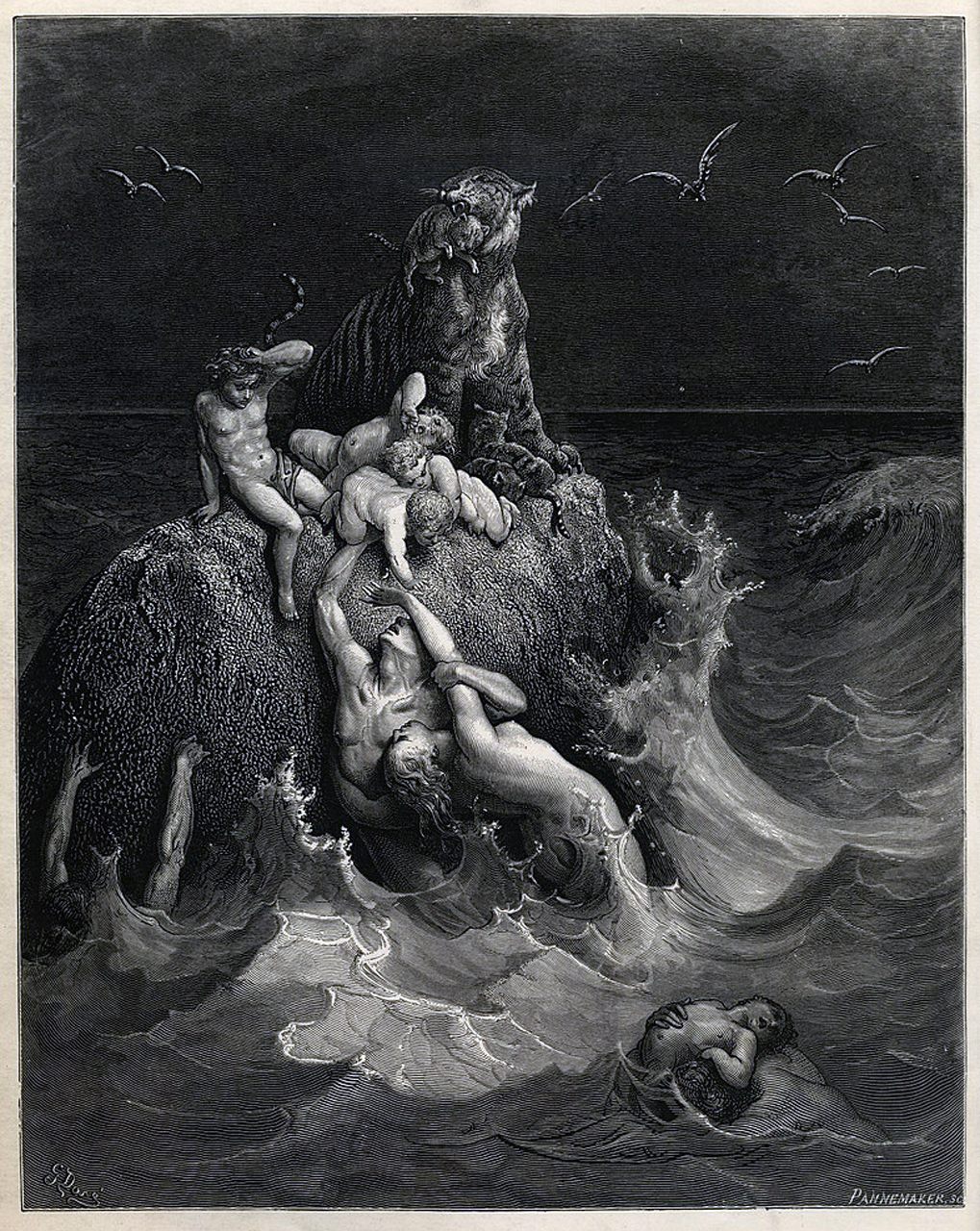
There’s the Great Flood, which he dated to 3361 B.C., naturally during a watery triplicity. After leaping past several cycles of great conjunctions, he arrived at 26 B.C., the time of a shift from a watery to a fiery triplicity. According to Masha’allah, this transfer heralded the birth of Christ and the advent of the Christian era. It also adds an interesting spin to John the Baptist’s prophecy that, although he baptized with water, the one who followed him would baptize with fire.
Skipping ahead a half-millennium, Masha’allah next examined the conjunction of the year 571, which brought the sequence back to another watery triplicity. This transfer presaged the birth of Muhammad and the rise of the Arabs, whose sign, according to Masha’allah, was Scorpio.
Finally arriving at the events of his own day, Masha’allah regarded the conjunction of 769—the end of a watery triplicity and the beginning of a fiery one—as an indicator of an ebb in Arab power and a resurgence of Persia. As for Masha’allah himself, it’s believed that he died around the year 815. He did, however, extend his chronology to predict, entirely accurately although rather unimaginatively, continued political strife between Arabs and Persians.
Recreating Masha’allah’s chronology of Jupiter-Saturn conjunctions using modern data reveals that his approximations for the orbital periods of Jupiter and Saturn were actually pretty decent, even if there’s never really a sharp transition between one triplicity and the next. The pattern of small, middle, and great conjunctions still stands out in modern data, a charmingly captivating system. It’s easy to see why anyone with a knack for historical dates might get engrossed in its narrative possibilities. Were the renewed conquests of Islam under the Ottomans due to the return of a watery triplicity? Is the Middle East more susceptible to European invasion, by crusaders or colonialists, when an earthy triplicity holds sway? It hardly seems any more arbitrary than, say, the ancient, medieval, and Renaissance periods taught in school.
In fact, astrologically organized histories were considered quite scientific during the Medieval Period—or, if you prefer, during the seventh great conjunction cycle between the fiery triplicities of 769 and 1603. The most prominent popularizer of this approach was Abu Mashar, the preeminent astrologer of Baghdad the generation after Masha’allah. And among its notable proponents was Abraham ibn Ezra, medieval Spain’s famed Jewish poet and philosopher, who inserted the theory into his commentary on Exodus.
Christian chronologists were similarly swept up. The dreaded return of the fiery triplicity in 1603, a year that saw the death of England’s Queen Elizabeth I, was examined at length by no less an authority than astronomer Johannes Kepler. Several writers even went so far as to rely on the scheme for some pretty bold predictions. German monk Johannes Trithemius, for example, writing around the year 1500, bluntly asserted that liberty would not be restored to the Jews prior to August 1880. In fact, this is more or less exactly when the first wave of Zionist settlers immigrated to Ottoman Palestine. The medical faculty of Paris blamed the Black Plague, which arrived in Europe in 1347, on a corruption of the atmosphere caused by the conjunction of Jupiter, Saturn, and Mars in Aquarius the year 1345. (Incidentally, this is the exact same configuration that has prevailed during the COVID-19 pandemic of 2020.) But most notoriously of all, French Catholic cardinal Pierre d’Ailly, writing around 1400, concluded his astrological history of the world with a warning that the Antichrist could be expected to arrive in the year 1789. Depending on how reactionary your views are regarding the French Revolution, this may strike you as humorously prescient.
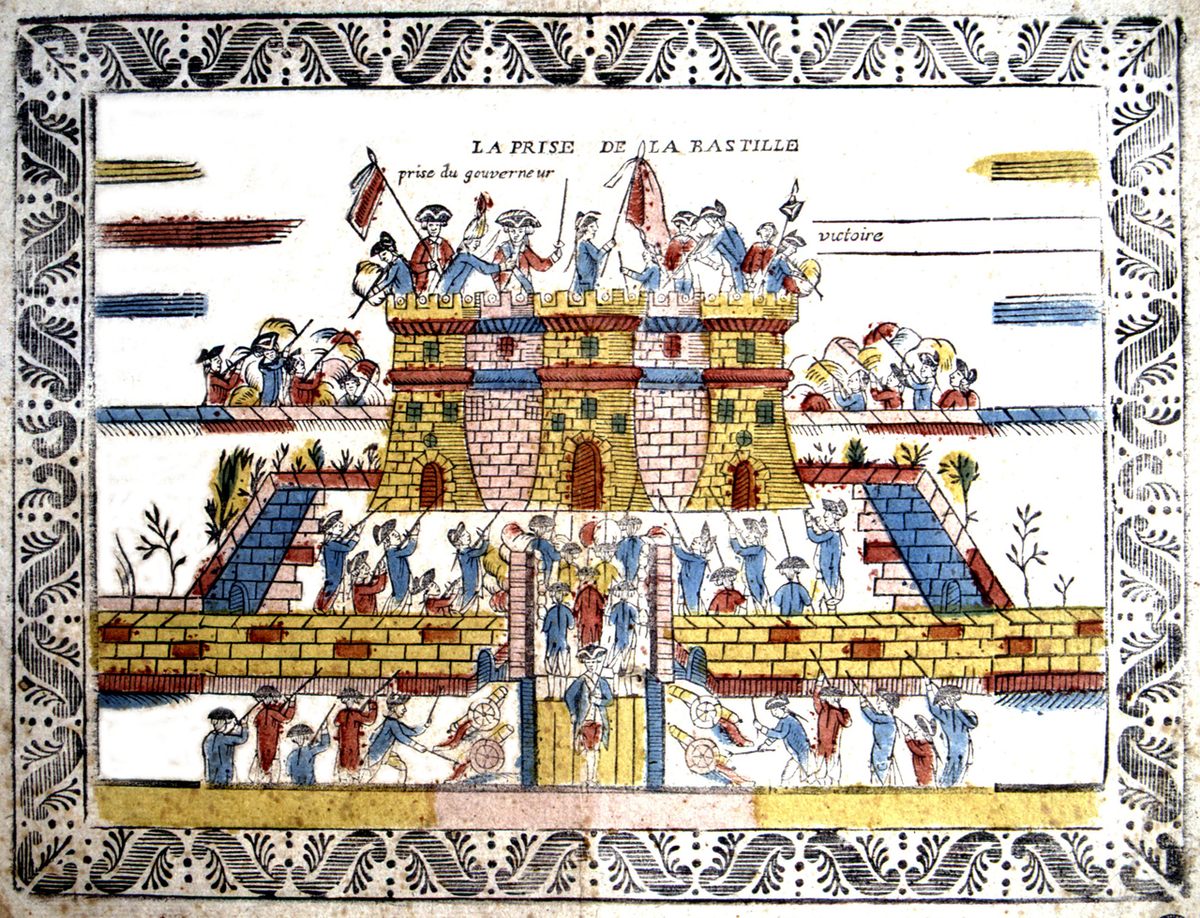
Unlike with other astrological assertions, where an analysis might entail an elaborate hunt for the faintest hint of a correlation, the correlations in the conjunction theory of history seem to leap out from everywhere. It is roughly analogous to the engineering distinction between noise, in which nothing looks like a signal, and clutter, in which everything looks like a signal. Perhaps, though, an even better analogy can be made to cryptology: History, here, is like a secret code, with astrology as its key.
The art of concealing a message in secret writing is called cryptography and its practice is as old as writing itself, but deciphering a secret message without a key requires cryptanalysis—which emerged as a science only in Baghdad under the Abbasids. The father of cryptanalysis was Abu Yusuf Yaqub ibn Ishaq al-Kindi, a man who was deeply devout, deeply mathematical, and deeply obsessed with astrology. His treatise On Rays, for example, has to be history’s most valiant attempt to give astrology—and magic—a firm, philosophical foundation.
As al-Kindi recognized, the art of writing is itself an act of magic, in its power is to transmit thoughts and emotions across vast distances with symbols alone. Given al-Kindi’s sensitivity to the power of symbols, it’s altogether apt that he, together with his famous contemporary al-Khwarizmi, was instrumental in promoting the adoption of Hindu numerals. The magic of this system derives from the digit 0, which permits, through its use as a placeholder, every natural number to be expressed with just 10 abstract characters.
The Arabic word for the digit 0 is صفر, sifr. When this system was introduced to Europe by Fibonacci (of the famous sequence), sifr was Latinized as zephirum, which gave rise both to the word “zero” and the word “cipher.” To medieval Europeans, who were used to seeing a quantity such as one-thousand, two-hundred and two written as MCCII, the characters 1202 doubtless did look like a secret code, or cipher.
Living in Baghdad, where transcription, translation, and interpretation rose to the level of a spiritual calling as well as an intellectual one, al-Kindi would have been well aware of the power of symbols to conceal. But al-Kindi outstripped all of his predecessors in compelling symbols to reveal their secrets. His “Manuscript on Deciphering Cryptographic Messages” was the first to show that simple ciphers can be cracked by a technique known today as frequency analysis.
And yet, not all of the universe’s secrets are encrypted with a cipher. Occasionally, some of the deepest secrets can be found hiding right before our eyes. The practice of concealing a message in plain sight, so to speak, is called steganography, from the Greek stego (στέγω), meaning “cover,” and grapho (γράφω), meaning “write.” Steganography is a much more devious craft than conventional cryptography since, while it’s obvious that a text in cipher is concealing a secret message, however difficult it may be to decipher, the object of steganography is to deflect suspicion that there’s any secret at all.
Simply put, anything can, and most everything has, historically, been used to cloak secrets in settings that are otherwise perfectly public, be it poetry, music, botanical drawings—or star charts. In fact, as recently as 1996, a hidden message was discovered to have been concealed in the astrological tables of a notorious occult manuscript from the 1500s. The mischievous monk who devised this scheme was Johannes Trithemius, the same one who predicted the political fortunes of the Jews. Remarkably, he even went so far as to write an entire book about steganography which, appropriately enough, he disguised to look like a book of spells for summoning spirits. (A pretty neat trick, don’t you think?)
The ability to look at the world and see what others cannot is generally taken as a mark of genius. But for every al-Kindi, Copernicus, or Einstein, there have been thousands who insist on seeing connections that simply aren’t there. Astrology likes to hover on the boundary between the two, presenting endless layers of planetary patterns, from perfectly real to positively paranoid.
Returning to Jupiter-Saturn conjunctions, why were they so often interpreted as a code to the secrets of history? With a traditional cipher, the correct key results in a perfectly readable message, while the wrong key returns gibberish. With steganography, however, nothing can be ruled out. Anyone who maintains that there’s no correlation between the conjunctions of the planets and the events of world history is in the unenviable stance of having to prove a negative. The mathematical procedures pioneered by al-Kindi, the original father of cryptology, are powerless here. We can, however, turn to the man who is rightly called the father of modern cryptology: William Friedman, best known for breaking the Japanese diplomatic ciphers in the run-up to World War II.
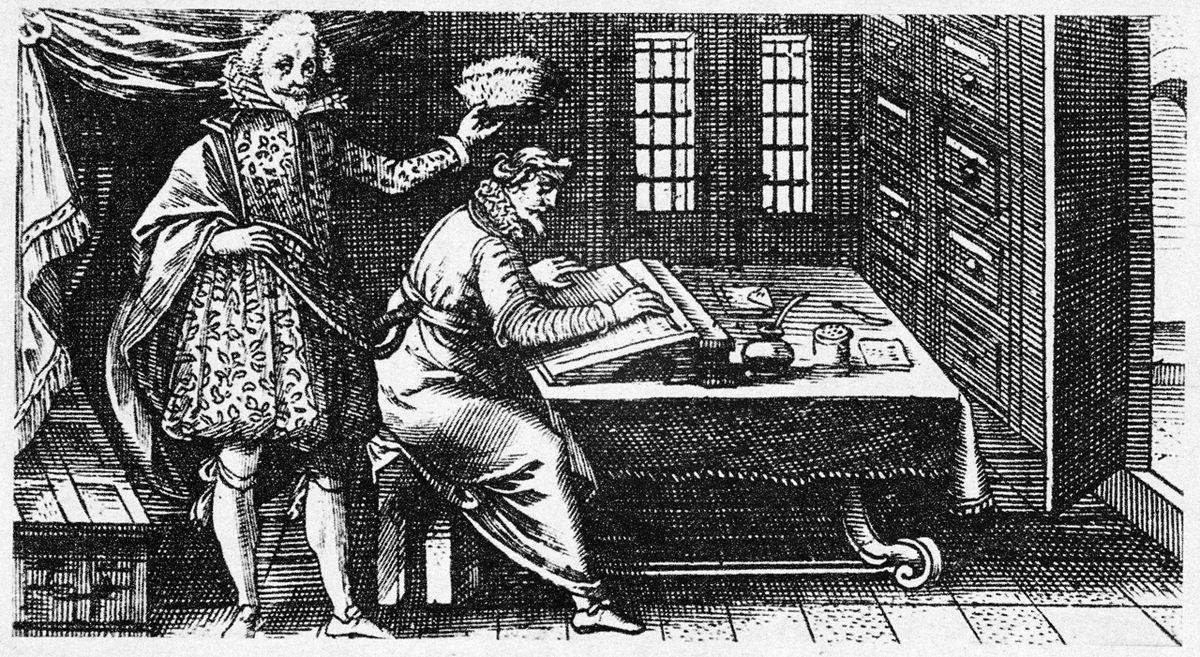
Oddly, William Friedman, America’s preeminent 20th-century codebreaker, began his cryptologic career when he was hired, with no prior experience, to search for hidden messages in the works of William Shakespeare. Specifically, he was asked to verify the existence of certain ciphers, to use the term loosely, supposedly proving that the works of Shakespeare were actually authored by Francis Bacon, the essayist, philosopher of science, and onetime chancellor of England. Proponents of these ciphers claimed that individual letters in the early printings of Shakespeare’s plays were marked in subtle ways. With a generous eye and a suggestive mind, true believers had managed to combine these letters into startlingly elaborate confessions that Shakespeare had been a mere front for the genius of Bacon. Friedman thought all of this was lunacy.
Later, during his retirement, Friedman was determined to settle the matter once and for all. In this, he was joined by his wife, Elizebeth, whom he had first met as a fellow skeptic in the original Shakespeare cipher group. Like William, Elizebeth would become a distinguished cryptologist in her own right, leading, for example, the U.S. Treasury Department’s efforts to decipher the codes of bootleggers and rum-runners during Prohibition.
Operating according to the principles of unbiased scientific inquiry, the husband-and-wife cryptology team published The Shakespearean Ciphers Examined in 1957, which demonstrated, one by one, that none of these so-called ciphers could stand up to scrutiny. Their work is directly relevant to astrology because they address head-on the question of how to determine if a signal, or pattern, or secret code is real. (Or if you’re just nuts.)
Generally speaking, there’s no mathematical formula or algorithm that can solve a steganographic cipher. The Friedmans did, however, stipulate two general conditions that any such solution must satisfy. First, whatever decryption procedure is proposed must give a sensible result when applied rigorously. The main problem with the so-called Baconian ciphers was that their “discoverers” were constantly inserting letters here or skipping letters there to make their systems work. Such arbitrariness should be taken as an argument against these ciphers having been used in the first place. The conjunction theory of history exhibits a similarly ample amount of wiggle room, since the conjunctions themselves don’t need to coincide with any historical date exactly. Instead, it’s enough for a conjunction merely to foreshadow, in some vague way, an upcoming event or era. Thus the fiery triplicity said to presage the birth of Jesus is permitted to begin a full quarter-century earlier. And plenty of other conjunctions, unattached to world events, are simply left out.
Yet, to give a counterexample, if I told you that the first letters of the nine preceding paragraphs, including this one, spells out ASTROLOGY (“And,” Simply,” … “Yet”), there should be no doubt that this message was placed there on purpose. The method is applied rigorously, and the probability of these nine letters occurring this way by chance is impossibly small.
The second general condition stipulated by the Friedmans is that the solution must be unique. As they demonstrated colorfully in their book, a decryption method that tells you that Bacon was the true author of Shakespeare’s plays can hardly be valid if the same method can be used to reveal that Theodore Roosevelt, Gertrude Stein, and even William Friedman himself were in on the plot. The significance of any one solution is diminished in accordance with how easy it is to produce competing, if not contradictory, solutions. As the Friedmans put it, “Just as there is only one valid solution to a scientific or mathematical problem, so there is only one valid solution to a cryptogram … to find two quite different but equally valid solutions would be an absurdity.”
Thus, whatever we conclude about the conjunction theory of history should, properly, depend upon how uniquely we think it correlates with one sequence of historical dates and not any others. This, in turn, suggests a pattern-matching game. For instance, looking back at just the last 200 years, we can observe a remarkably strong correlation between the nine most recent Jupiter-Saturn conjunctions and the terms of U.S. presidents who either died in office, were assassinated, or survived near-death mishaps.
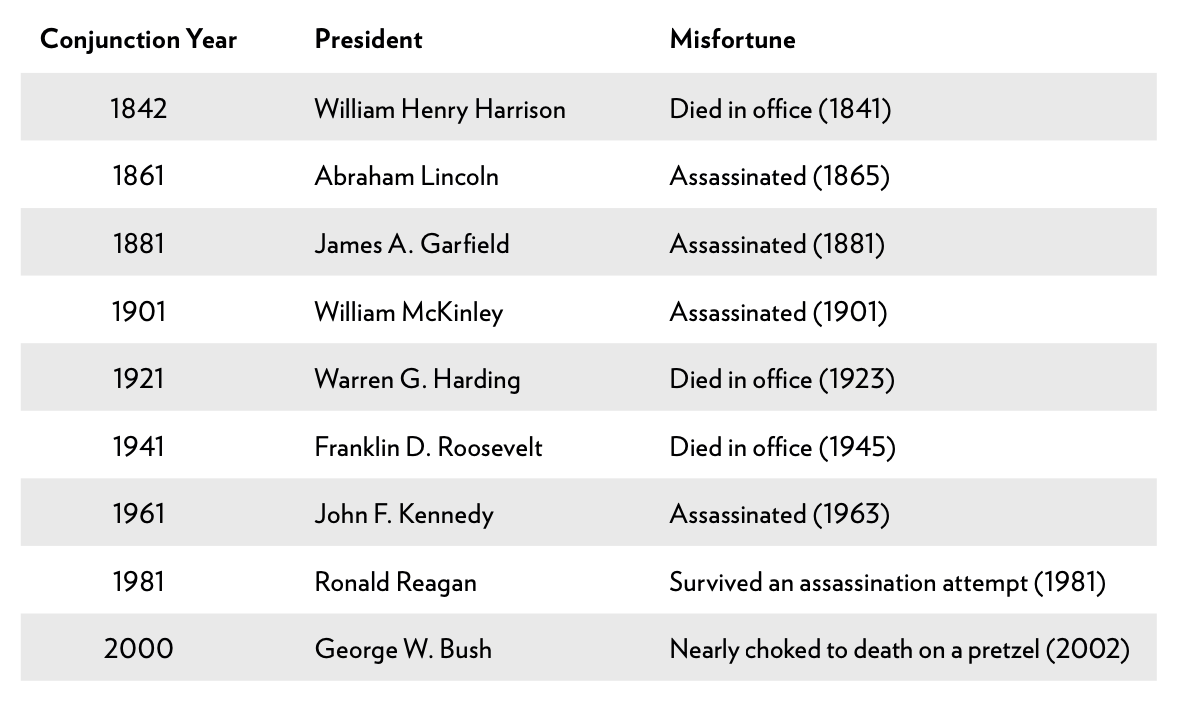
We could also, if we wish, note an intriguing connection between the conjunctions and the development of space exploration: 1901—Orville and Wilbur Wright experiment with powered flight; 1921—Robert Goddard experiments with liquid-fuel rocketry; 1941—Wernher von Braun begins development of the V-2 rocket; 1961—Yuri Gagarin is the first man in space; 1981—the maiden launch of Columbia, the first space shuttle; 2000—the initial manned mission arrives at the International Space Station.
And yet, maybe the true, cosmic significance of a Jupiter-Saturn conjunction is to ensure that the New York Yankees make it to the World Series, as, indeed, they have in every conjunction year since the game has been played: 1921, 1941, 1961, 1981, and 2000. (The first modern World Series was played in 1903.)
So, how many patterns can you pick out? Whatever you predict, get ready to have it tested. The next Jupiter-Saturn conjunction is coming: December 21, 2020, the exact date of the winter solstice.




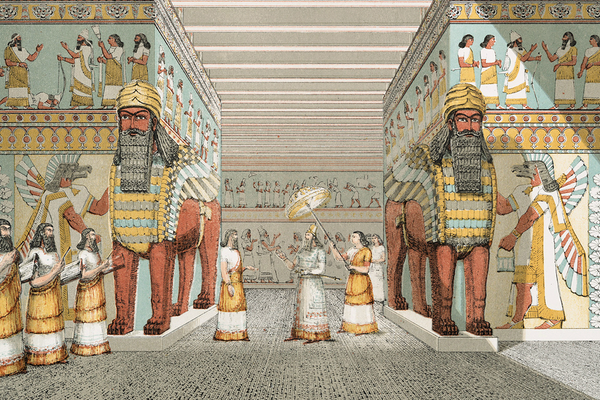





















Follow us on Twitter to get the latest on the world's hidden wonders.
Like us on Facebook to get the latest on the world's hidden wonders.
Follow us on Twitter Like us on Facebook